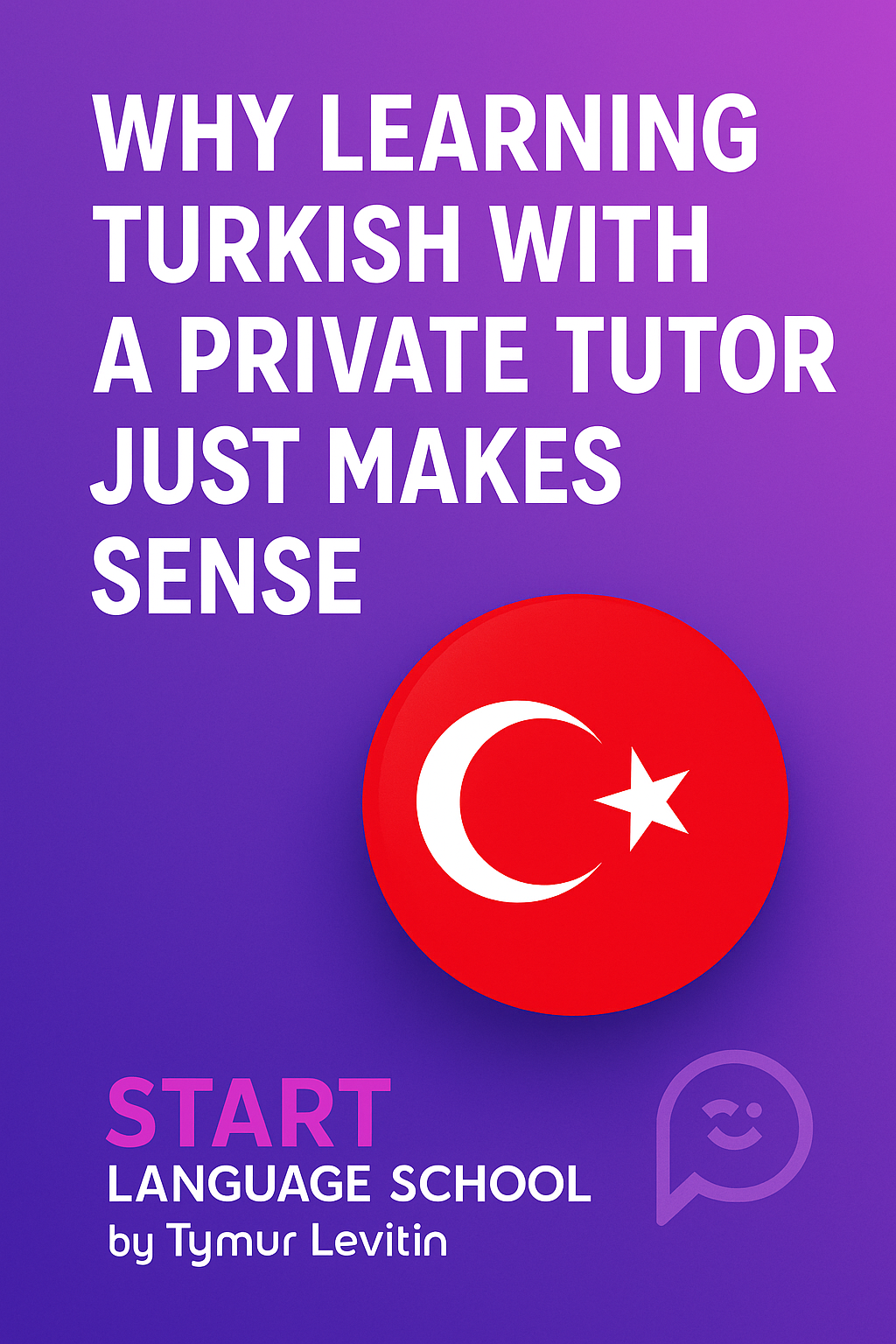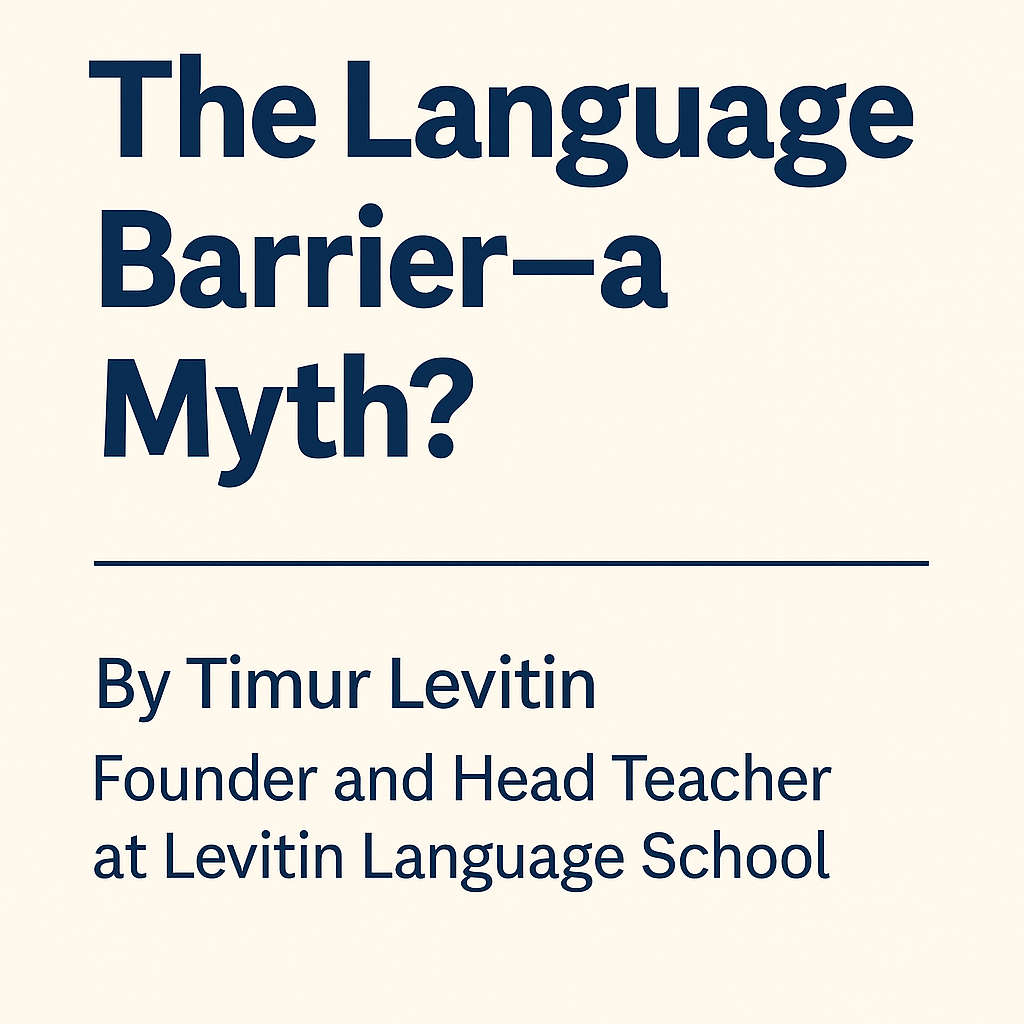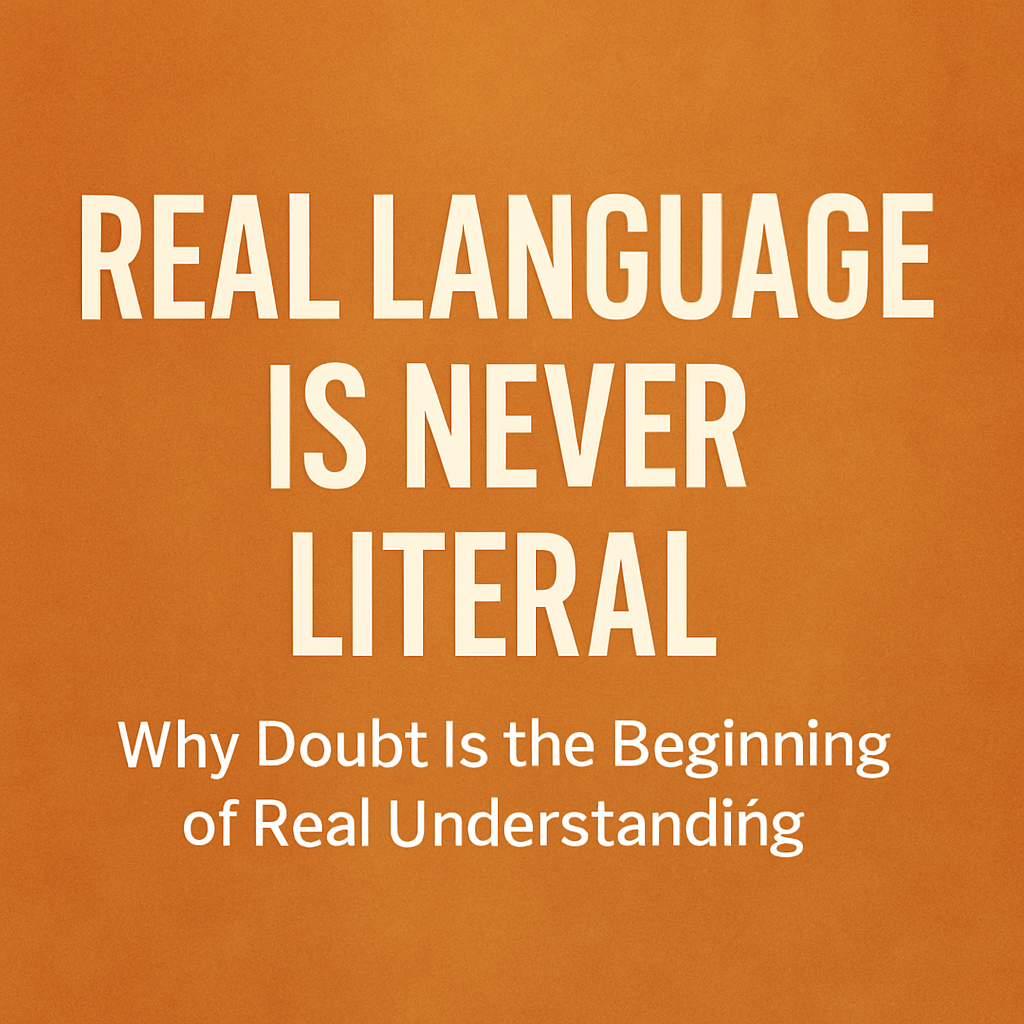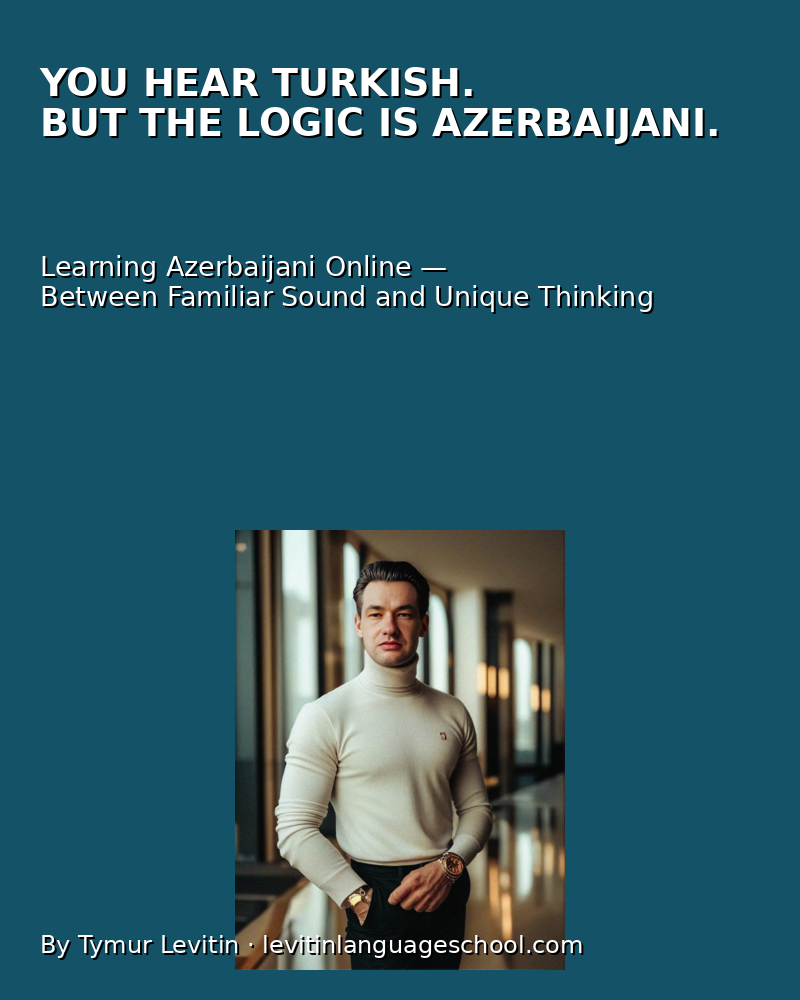Авторська колонка Тимура Левітіна
Засновник і директор мовної школи Левітіна
🔗 Мовна школа "Старт" від Тимура Левітіна
Що, якщо "мовний бар'єр" насправді не пов'язаний з мовою?
"Я знаю слова. Я знаю граматику. Але я все ще не можу говорити."
Звучить знайомо?
Це те, що студенти по всьому світу кажуть щодня. І це те, що багато хто все ще називає мовний бар'єр. Але давайте будемо чесними: справжня перешкода не в мові, а в менталітеті.
Насправді, чим більше ви Знаю. але не треба. розумію.тим вищим стає цей бар'єр.
Чому знання ≠ майстерність
Більшість традиційних курсів ділять мову на три блоки:
- словниковий запас
- граматика
- розмовляю
А потім пропонують лінійну послідовність:
спочатку слова, потім правила, потім мова.
Такий підхід є застарілим і неефективним.
Тому що мова - це не контрольний список.
Це жива системаі її компоненти треба вивчати разом, а не один за одним.
Говоріння не повторюється
Один з найнебезпечніших міфів у вивченні мови:
"Якщо ви можете це повторити, ви можете це говорити".
Це неправда.
Якщо ти не розумієш:
- чому речення побудоване таким чином,
- що зміниться, якщо його переставити,
- або як це відповідає ситуації -
то ти мовчиш. Ти виконання.
Саме так багато студентів "викручуються" в базових ситуаціях - поки щось не виходить за рамки сценарію.
Тоді вся ілюзія руйнується.
Справжнім "бар'єром" є відсутність структури
Щойно студент стикається з чимось несподіваним - довшим запитанням, іншим порядком слів, незнайомою ідіомою - він завмирає.
Вони не замерзають, бо слабкі.
Вони застигають, бо їх ніколи не вчили орієнтуватися.
Тому що їх навчили імітуватиа не щоб зрозуміти.
Що насправді допомагає студентам прорватися вперед
Ось що дійсно працює - послідовно, різними мовами:
✅ 1. Навчання в контексті
Лексика, структура, вимова та граматика - викладається як єдину системуа не окремо.
✅ 2. Пояснення, а не здогадки
Не витрачайте час на здогадки, що означає те чи інше слово.
Запитай. Отримайте ясність. Зрозумій чому.
✅ 3. Інтуїція, побудована на структурі
Інтуїція - сильна штука.
Але її треба тренувати - шляхом багаторазового, осмисленого контакту з мовою.
✅ 4. Реальна мова, а не відпрацьовані за сценарієм вправи
Правдива мова брудна.
Це включає в себе переформулювання, паузи, виправлення - і свободу думати вголос.
Так що ж робити?
Ось що я кажу кожному студенту:
Не бійтеся робити помилки.
Не чекайте, поки ви відчуєте, що "готові" говорити.
Не відкидайте граматику - використовуйте її з розумом.
І найголовніше: просити пояснень. Ви заслуговуєте на розуміння.
Мова - це не про іспити, рівні чи тенденції.
Це про ясно мислити, глибоко розуміти, вільно говорити - і знати, що ви робите.
І якщо ви не відчуваєте себе впевнено, коли говорите, це не тому, що з вами щось не так.
Це тому, що спосіб, яким вас вчили, не був побудований для реального спілкування.
Пов'язана література (незабаром)
→ Чому ми не обіцяємо, що ви заговорите за 30 днів
→ Найкращі курси англійської мови - що найважливіше
→ Вивчайте англійську з приватним репетитором, який допомагає вам думати
Посилання будуть оновлені після публікації.
© Тимур Левітін
✍️ Автор, засновник, директор і провідний викладач мовної школи Левітіна
Ця стаття є частиною авторської колонки:
🟦 Мова без ілюзій: Колонка Тимура Левітіна про реальне навчання
Далі в серії:
"Метод повного занурення: Про що вам не говорять"
Скоро буду.
























